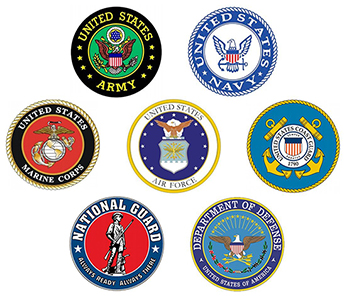
Sarraf.com is grateful to all military personnel and their families. To say thank you - and make every order easy - you have access to an exclusive phone number and more.
Your first-in-line benefits:
- Exclusive phone number 213-612-4690
- Free shipping to all APO, FPO, and DPO addresses
- Partnership with military postal service assures secure delivery
Shipping Information (yes, we do), Method & Limits
Sarraf.com will ship any order under $25,000 to an APO, FPO, or DPO address. We ship all APO/FPO orders via USPS Priority Mail to the appropriate APO/FPO processing center then via the military postal service and shipment tracking is not available for APO/FPO addresses. For security purposes, USPS will not show a delivery scan or in transit scans for packages sent to these addresses
Estimated Shipping Times
Sarraf.com guarantees your package will arrive at the appropriate APO/FPO processing center within 2-4 business days. Most shipments usually arrive to you within a total of 5-10 business days. However, some orders may take up to 20 business days to arrive. If you are already familiar with sending packages to APO & FPO addresses, your Sarraf.com order is likely to arrive in about the same amount of time.
Insurance
As with all Sarraf.com orders, your shipment is insured from the moment it leaves our door until it arrives at yours.
Sales Tax Information
Because APO/FPO addresses are considered domestic, no taxes or duties are due on orders shipped to them. If an order is shipped directly to a base, rather than through the APO/FPO system, however, taxes and duties would be applicable. Sarraf.com will include all required tax documentation with your order.
How to Format Addresses
Improperly formatting your address may result in delivery delays. Please enter your ship to information in the following format for APO/FPO/DPO shipments:
RANK Full Name
PSC/UNIT/CMR, Box #(if applicable)
CITY (APO, FPO, or DPO), STATE (AA, AP, or AE), ZIP (5-digit or ZIP+4)
Use AE for Europe, Middle East, Africa, and Canada, AP for Pacific, AA for Central & South America
Example:
PFC Jack Lyon
Unit 1234, Box 56789
United States
APO, AP 96522-1215
Returns
Sarraf.com's regular return policy applies to orders shipped to APO/FPO addresses. Although Sarraf.com's standard return period is 30 days after shipping, we understand that packages shipped to APO/FPO addresses may take longer than this to arrive. If your order does not arrive within 30 days, you may still return your order.
Product Restrictions
Shipments are subject to the import restrictions of the country in which your base is located.
See https://www.usps.com/ship/apo.htm for details.
Other FAQs
My billing address is an APO/FPO, but I want to send an order to an address state side; can I do this?
Yes, we can deliver to US addresses if your billing address is an APO/FPO
Will a signature be required for delivery?
Signature requirements will be determined by the military postal service.
I am posted overseas, can my shipment from Sarraf.com be sent via APO/FPO/DPO to my location?
Yes, we ship orders going to APO address with all documentation needed for Customs clearance via APO mail system. Orders shipped overseas via a APO/FPO/DPO are subject to the destination country's restrictions on prohibited items but are not subject to local duty or sales tax.
If I'm in a hurry to get my shipment, can I send it to my local address instead of using the APO address?
You may ship orders directly to your local U.S. base address, subject to military restrictions, for faster delivery times. Any international shipments sent to a non-APO/FPO/DPO address are subject to the local country's duties and taxes.

